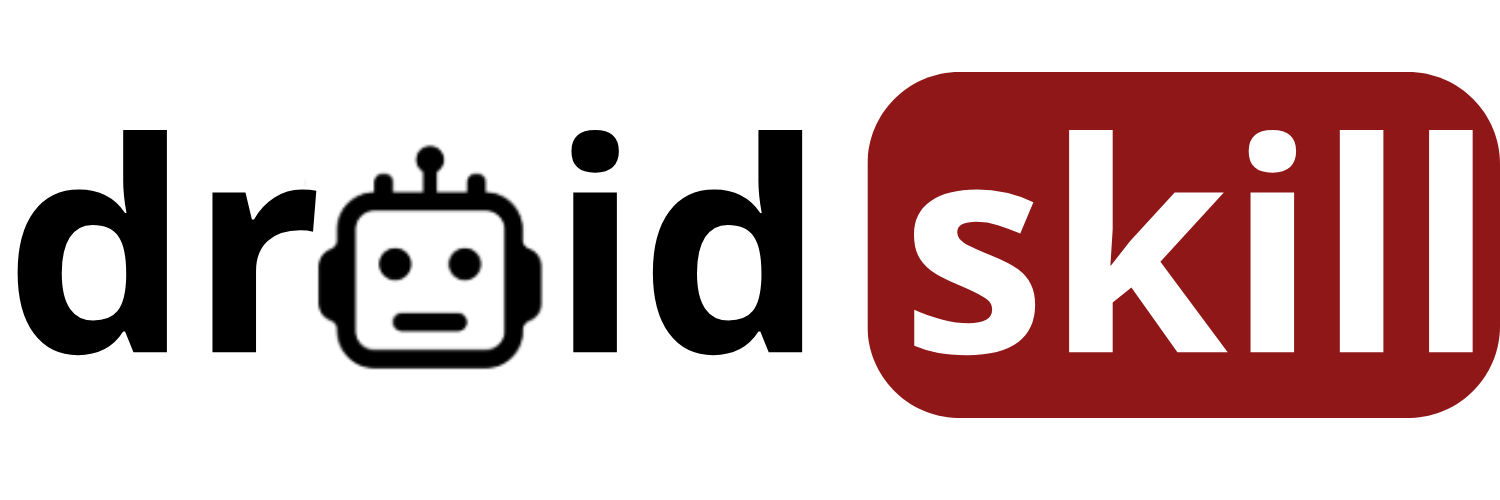Hey Android enthusiasts! Ready to supercharge your app experience? You've landed in the right place. Today, we're diving deep into the world of Android app optimization, unlocking secrets to make your device run smoother, faster, and more efficiently. Whether you're battling lag, struggling with battery drain, or just aiming for peak performance, this guide is your ultimate resource. Let's get started!
Why Optimize Your Android Apps?
Before we jump into the how, let's quickly cover the why. Optimizing your Android apps isn't just about making things look pretty; it's about enhancing your overall user experience. A well-optimized app:
- Consumes less battery, extending your device's uptime.
- Frees up valuable storage space.
- Reduces lag and improves responsiveness.
- Minimizes data usage, saving you money on your mobile plan.
- Enhances security by keeping apps up-to-date and removing unnecessary permissions.
In short, optimizing your apps is a win-win situation for both you and your device. Now, let's explore the strategies you can use to achieve this.
1. Greenify
Greenify is a powerful tool designed to hibernate apps when they're not in use, preventing them from running in the background and draining your battery. It intelligently identifies apps that are behaving badly and puts them to sleep, waking them up only when you need them. This can significantly improve your device's battery life and performance.
Greenify is particularly useful for apps that you don't use frequently but tend to run in the background, consuming resources. It's a simple yet effective way to manage your apps and keep your device running smoothly.
Playstore Link: Greenify on Playstore
Search on Playstore: Find Greenify on Playstore
2. CCleaner
CCleaner is a well-known name in the world of PC optimization, and its Android app brings the same cleaning power to your mobile device. It helps you remove junk files, clear cache, and manage apps to free up storage space and improve performance. CCleaner also includes a system monitoring tool that provides insights into your device's CPU usage, RAM, and battery levels.
With CCleaner, you can easily identify and remove unnecessary files that are cluttering your device, such as temporary files, residual files from uninstalled apps, and empty folders. It's a comprehensive cleaning solution that can help you keep your Android device running smoothly and efficiently.
Playstore Link: CCleaner on Playstore
Search on Playstore: Find CCleaner on Playstore
3. SD Maid
SD Maid is a powerful system cleaning tool that goes beyond the basics. It helps you clean up your device by removing orphaned files, system logs, and other unnecessary data. SD Maid also includes a file explorer that allows you to browse your device's storage and manually delete files. It's a great tool for advanced users who want to take control of their device's storage.
SD Maid's CorpseFinder feature is particularly useful for identifying and removing files left behind by uninstalled apps. It also includes a database optimizer that can help improve the performance of your device's database system. With SD Maid, you can keep your Android device clean and optimized for peak performance.
Playstore Link: SD Maid on Playstore
Search on Playstore: Find SD Maid on Playstore
4. All-In-One Toolbox
As the name suggests, All-In-One Toolbox is a comprehensive suite of tools designed to optimize your Android device. It includes a junk cleaner, memory booster, CPU cooler, app manager, and more. With All-In-One Toolbox, you can easily manage your device's resources and keep it running smoothly.
The app's Boost feature helps you free up RAM by closing unnecessary background processes. The CPU Cooler feature monitors your device's temperature and helps prevent overheating. All-In-One Toolbox is a versatile tool that can help you optimize your Android device in a variety of ways.
Playstore Link: All-In-One Toolbox on Playstore
Search on Playstore: Find All-In-One Toolbox on Playstore
5. AVG Cleaner
AVG Cleaner is a popular app optimization tool that helps you clean up junk files, remove duplicate photos, and manage apps. It also includes a battery saver feature that helps you extend your device's battery life. AVG Cleaner is a user-friendly tool that can help you keep your Android device running smoothly and efficiently.
The app's Smart Scan feature automatically identifies and removes unnecessary files, such as cache, temporary files, and residual files from uninstalled apps. The Photo Cleaner feature helps you identify and remove duplicate or similar photos, freeing up valuable storage space. AVG Cleaner is a comprehensive cleaning solution that can help you optimize your Android device with ease.
Playstore Link: AVG Cleaner on Playstore
Search on Playstore: Find AVG Cleaner on Playstore
Beyond Apps: Manual Optimization Tips
While app optimization tools can be incredibly helpful, there are also several manual steps you can take to improve your Android device's performance. Here are some essential tips:
1. Uninstall Unused Apps: This might seem obvious, but it's often overlooked. Go through your app drawer and uninstall any apps you no longer use. These apps are taking up valuable storage space and may be running in the background, consuming resources.
2. Clear App Cache: Apps often store cached data to speed up loading times. However, this cache can accumulate over time and take up significant storage space. To clear an app's cache, go to Settings > Apps > [App Name] > Storage > Clear Cache.
3. Disable or Limit Background Data: Some apps consume data in the background, even when you're not actively using them. To disable or limit background data usage, go to Settings > Data Usage > [App Name] > Background Data. You can also restrict background data usage for all apps by enabling Data Saver mode in Settings > Data Usage > Data Saver.
4. Update Your Apps Regularly: App updates often include performance improvements, bug fixes, and security patches. Make sure you have automatic app updates enabled in the Google Play Store or manually check for updates regularly.
5. Use a Lightweight Launcher: The launcher is the app that manages your home screen and app drawer. Some launchers are more resource-intensive than others. Consider using a lightweight launcher, such as Nova Launcher or Lawnchair Launcher, to improve performance.
6. Disable Animations: Animations can make your device feel smoother, but they can also consume resources. To disable animations, go to Settings > About Phone > Tap Build Number 7 times to enable Developer Options. Then, go to Settings > Developer Options and set Window animation scale, Transition animation scale, and Animator duration scale to Off or .5x.
7. Factory Reset (as a Last Resort): If you've tried everything else and your device is still running slow, a factory reset may be necessary. This will erase all data on your device, so be sure to back up your important files before proceeding. To perform a factory reset, go to Settings > General Management > Reset > Factory Data Reset.
Understanding App Permissions
Another crucial aspect of app optimization is understanding and managing app permissions. Apps often request access to various features and data on your device, such as your location, contacts, camera, and microphone. While some permissions are necessary for an app to function properly, others may be unnecessary or even intrusive.
Reviewing App Permissions:
Take the time to review the permissions requested by each app on your device. To do this, go to Settings > Apps > [App Name] > Permissions. Here, you'll see a list of all the permissions the app has requested. If you're uncomfortable with a particular permission, you can revoke it by toggling the switch next to it.
Granting Permissions Wisely:
Be mindful of the permissions you grant to apps. Only grant permissions that are necessary for the app to function properly. For example, a photo editing app may need access to your storage to save images, but it shouldn't need access to your contacts. If an app requests a permission that seems unnecessary, consider denying it.
Using Permission Management Apps:
Several apps on the Google Play Store can help you manage app permissions more effectively. These apps allow you to monitor which apps are accessing your data and revoke permissions as needed. Some popular permission management apps include App Ops and Bouncer.
Staying Secure:
By carefully managing app permissions, you can protect your privacy and security. Be wary of apps that request excessive permissions or permissions that seem unrelated to their functionality. Always download apps from trusted sources, such as the Google Play Store, and read reviews before installing them.
The Importance of Regular Maintenance
Optimizing your Android apps is not a one-time task; it's an ongoing process. To keep your device running smoothly and efficiently, it's essential to perform regular maintenance. This includes:
- Cleaning up junk files and cache regularly.
- Uninstalling unused apps.
- Updating your apps to the latest versions.
- Managing app permissions.
- Restarting your device periodically.
By incorporating these maintenance tasks into your routine, you can ensure that your Android device remains optimized for peak performance.
Advanced Optimization Techniques
For those who are more tech-savvy, there are several advanced optimization techniques you can use to further improve your Android device's performance. These techniques may require root access or a custom ROM, so proceed with caution and only if you're comfortable with the risks involved.
1. Custom ROMs: A custom ROM is a modified version of the Android operating system that can offer improved performance, battery life, and customization options. Popular custom ROMs include LineageOS, Pixel Experience, and Paranoid Android. Installing a custom ROM can be a complex process, so be sure to research thoroughly and follow instructions carefully.
2. Kernel Tweaks: The kernel is the core of the Android operating system. By tweaking the kernel, you can optimize various aspects of your device's performance, such as CPU frequency, RAM management, and battery life. Kernel tweaks typically require root access and a custom kernel manager app.
3. Overclocking/Underclocking: Overclocking involves increasing the CPU frequency beyond its default setting, which can improve performance but also increase heat and battery drain. Underclocking involves reducing the CPU frequency, which can improve battery life but also decrease performance. Overclocking and underclocking require root access and a custom kernel manager app.
4. ZRAM: ZRAM is a feature that compresses RAM to create more available memory. This can improve performance on devices with limited RAM. ZRAM is typically enabled through a custom kernel or a root-enabled app.
5. FSTRIM: FSTRIM is a command that optimizes the storage on your device by removing unused blocks. This can improve read and write speeds. FSTRIM is typically run through a terminal emulator app with root access.
Disclaimer: Advanced optimization techniques can be risky and may void your device's warranty. Proceed with caution and only if you're comfortable with the risks involved.
Conclusion: Your Optimized Android Awaits!
Optimizing your Android apps is a journey, not a destination. By implementing the strategies and tips outlined in this guide, you can significantly improve your device's performance, battery life, and overall user experience. Remember to regularly maintain your device and adapt your optimization techniques as needed. With a little effort, you can unlock the full potential of your Android device and enjoy a smoother, faster, and more efficient mobile experience. Happy optimizing!


